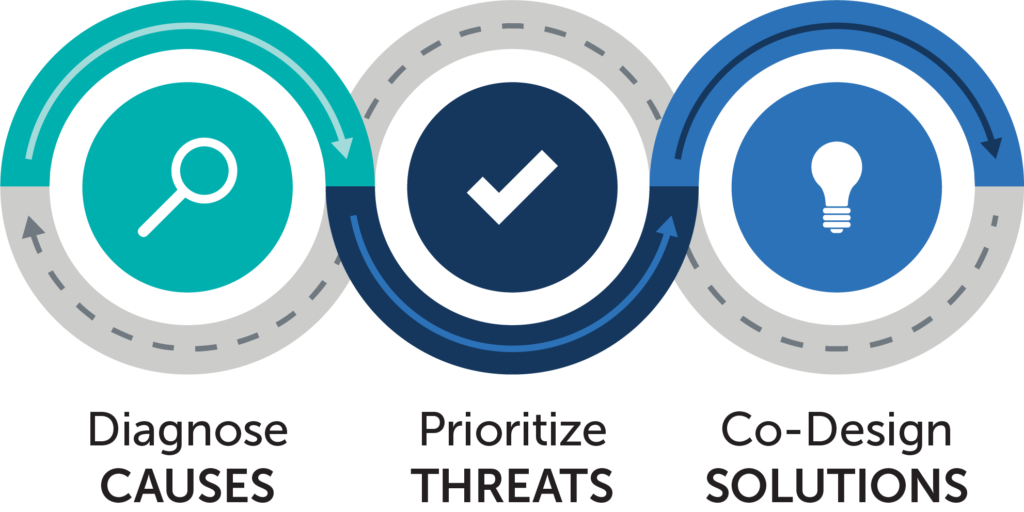Independent School Faculty Morale Resource Center
-
Diagnose causes
-
Prioritize threats
-
Co-design solutions
The range and size of demands we place on faculty have grown dramatically in recent years—protecting student mental health, quickly getting up to speed on virtual teaching and other technologies, and facilitating civil discourse among students and parents at a time of rising division. Schools’ current investments to improve morale, such as expanding wellness programs and increasing faculty appreciation efforts, have not worked.
But low faculty morale—even during challenging times—isn’t inevitable. EAB has uncovered outlier organizations across industries that dramatically improved employee morale despite challenging circumstances. Their success was not defined by a one-size-fits-all or a predetermined set of ideas for morale. Instead, their success shared one common ingredient: all outlier organizations diagnosed the evolving needs of employees and co-developed and adjusted solutions in collaboration with employees.
To help schools replicate this success, EAB has distilled this process into the faculty morale momentum loop.

1. Diagnose causes
To successfully improve morale, school leaders must align their perceptions of faculty morale drivers with faculty’s actual wants and needs. However, many schools do not have a strong system in place that diagnoses the ‘why’ behind low morale, nor collects the information frequently enough. The pandemic has made it evident how often faculty’s needs change even over the course of one school year.
Many schools don’t consistently survey their faculty on morale. And when they do, these surveys are often done piecemeal and not compared year-over-year to see what progress has been made. By contrast, best practice organizations focus on shorter, more targeted feedback collection at least quarterly. These organizations also embed ways to balance quantitative feedback with qualitative input to dig deeper into the root drivers of morale concerns, so they can better target solutions.

Implementation tools
2. Prioritize threats
Once organizations diagnose the reasons behind low morale, too often their next step is to throw several possible remedies at the most common problems that faculty raise. As a result, leaders attempt more than they can realistically address, which undermines trust and does not effectively improve morale.
Instead, schools must prioritize tackling one or two root causes of morale at a time based on potential impact on morale and feasibility for the school to effectively act. School leaders must also be mindful about consistently communicating feedback results, planned next steps, and rationale to faculty to keep them engaged and active participants in the momentum loop.

Implementation tools
3. Co-design solutions
The best organizations realize that top-down implementation of morale improvement strategies is usually ineffective. Grassroots efforts and strategies designed by faculty work better. However, most faculty (and school leaders) do not have the time or bandwidth to come up with their own morale-boosting solutions from scratch.
Schools must find ways to lower the participation barriers to solution development and avoid putting faculty on the hook to figure out how to improve their own morale. Instead, school leaders should offer a menu of ideas that faculty can help refine. Leaders should also integrate time for this into existing structures and incentives.

Implementation tools
- Guide to Co-Designing Solutions
- Morale-Booster Compendium
- Planning for Permanence Toolkit: Use this toolkit as a guide for school leaders to restart the process and make the Faculty Morale Momentum Loop a permanent fixture in their school.
This resource requires EAB partnership access to view.
Access the resource center
Learn how you can get access to this resource as well as hands-on support from our experts through Independent School Executive Forum.
Learn More